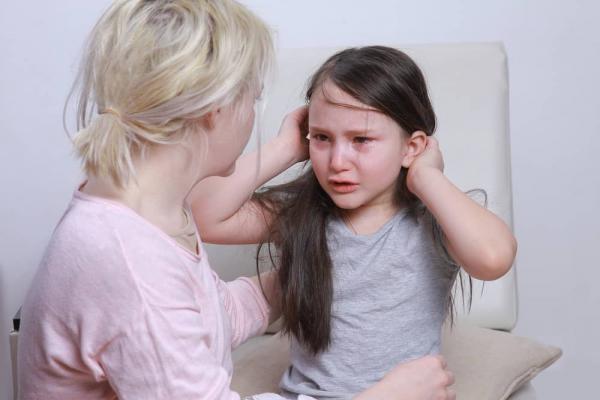
Fear is a real emotion. So how do you address your child's fear while validating them and making them understand that they don't have to be afraid. If you do it the wrong way, many children start to feel defensive or they will want to stop sharing their feelings with you.
It's important to be able to talk to your children and to be a good listener. You want your children to come to you with their fears, not to be another source of anxiety.
Michelle Woo says, "And yet when children have crippling fears-say, of dogs, germs or talking to new people-adults often tell them "Stop it, don't be afraid," which not only makes them more anxious, but also feel like they're disappointing those around them by being anxious. Just like adults, they need to learn how to live with their anxiety, rather than in fear of their fears."
So how should parents address their child's fears?
1. Talk it through
It is easy to be afraid of the unknown. Children often feel anxious about the new life and future they are facing. When you talk to the child, these "unknown" things become known.
Take the time to talk to your child. Whether you are talking to them as you pet the dog they are afraid of or on your way to the scary dentist, talking it through will provide comfort and confidence to your child. Talking things through with your children also provides a conversation for them to ask their questions about the topic.
2. Share personal experiences
Talk to your child about things that scare you. Teach them that everyone gets scared and that it's normal and totally OK.
If you share your experience of overcoming your fears, not only are you teaching your child that fear is a normal feeling, you will also be teaching them one possibility of how they can overcome their own fears.
3. Nickname the fear
This can seem like a silly thing to do, but it helps the child to be able to address their feelings and understand they can overcome these feelings.
"When a kid has anxiety, it can feel like his or her brain is highjacked for a while by worry, sort of like when a horse takes off galloping with his or her rider when they are not supposed to," says clinical psychologist Bridget
Walker, who writes about the strategy in her new book Anxiety Relief for Kids. "Nicknaming fosters a little objectivity in what can feel like a very scary moment. It's like saying to yourself, 'I know what you are doing, brain.'"
If your child is afraid of school, you can nickname this fear as schooly wooly. Then when they start to panic before or after school, you can ask them if they are feeling schooly wooly. Then you can talk them through this fear. If you want you can walk to school with your child or you can plan a time to meet with the teacher and your child. Giving the fear a nickname allows the child to explain when they are feeling afraid and helps you understand what triggers the fear.
The most important thing about nicknaming their fear is you are teaching them that feeling fear is OK, but it doesn't have to control them. It's important that instead of shaming them for these feelings, you talk to them about it. Fear is a real emotion, but it doesn't have to control you or your child's life.

